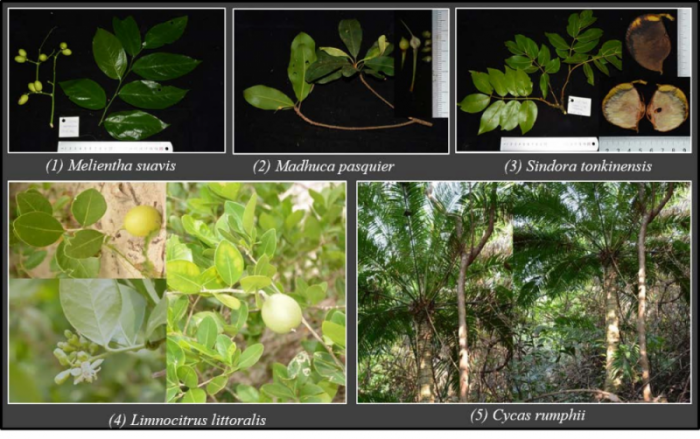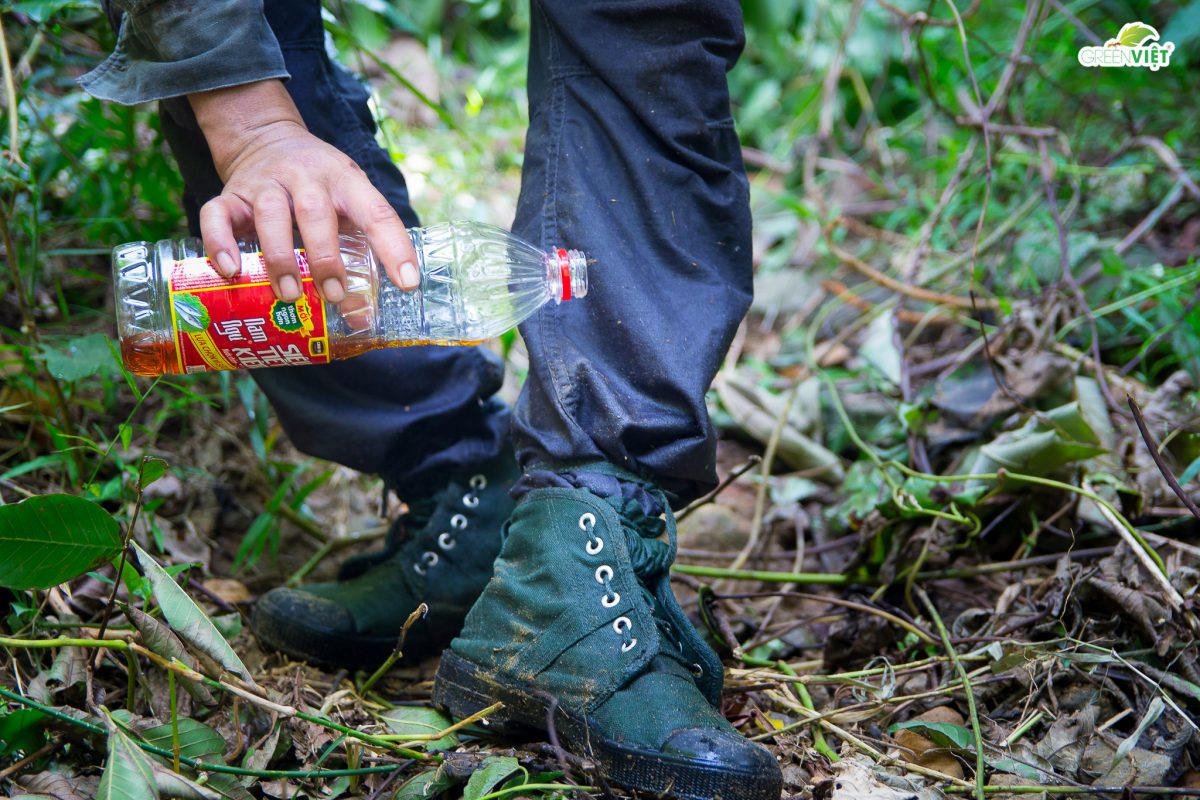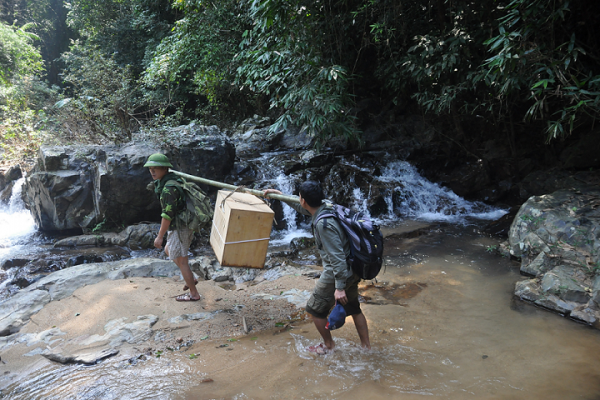INVESTIGATION OF FLORA IN CU LAO CHAM – A CORNERSTONE FOR SUSTAINABLE DEVELOPMEN
GreenViet and the Management Board of Cu Lao Cham marine protected area (MB of CLC MPA) are collaborating on a research study on flora in Cu Lao Cham. But what does this mean for the development of the island?
If anyone has ever traveled to the beautiful Cu Lao Cham archipelago, the world’s biosphere reserve recognized by UNESCO in 2009, which is located just 15km from Hoi An city, must have heard of local specialty stone crabs that cost up to 2 million VND/kg. Stone crabs dwell primarily in the forest, feeding on mushrooms, leaves, and fruits, so it’s safe to say that the survival of this species depends enormously on the archipelago’s flora. As a result, any impacts on the world of plants in the archipelago will pose a threat to the stone crab, whose population decline will inevitably hurt the local islanders’ business.

The tripartite relationship between flora, crabs, and islanders illustrated above is just one of the examples of the crucial role that Cu Lao Cham higher plants play in the sustainable development of the island. In fact, the local economic and social development is largely contingent on how effective the preservation and management of the island’s flora can get. Indeed, if forest vegetation deteriorates, people on the island will be the first to suffer the consequence of freshwater scarcity. The island’s forest vegetation is responsible for storing and supplying clean water for every day’s use of the local islanders as well as for tourists traveling to Cu Lao Cham. Plus, forest flora also plays the role of regulating local climate, alleviate the impact of natural disasters on people and housings, block out storms, and strong wind.

However recently, flora in Cu Lao Cham has been put under increasing pressure from human-induced factors, leading to an unavoidable consequence which is the decline of forest resources. This consequence will result in habitat loss for wildlife, which spells the depletion of wildlife diversity (such as the permanent extinction of stone crabs), and some species that are sensitive to environmental changes in the area of which we are still oblivious.

To address this problem, GreenViet proposed to MB of Cu Lao Cham MPA a research project to investigate species composition and establish an inventory of higher terrestrial plants on Hon Lao Island, the largest island and the only inhabited place out of the 8 islands of Cu Lao Cham. From November 2016 to now, GreenViet has cooperated with the MB of Cu Lao Cham MPA to implement project assignments. Preliminary investigation suggests the existence of some new endemic plants.

“We have to understand what kind of plants we have, how many we have, where they are distributed, so as to know how to manage, conserve and use them effectively “, Mr. Tran Ngoc Toan, GreenViet’s research team leader, explains why it is necessary to investigate the Cu Lao Cham flora.

Cu Lao Cham Archipelago has ecosystems rich in biodiversity and there are still many mysteries to be explored. However, the terrestrial biodiversity information is poorly documented and hasn’t yet been collected, updated, summarized and evaluated to create a consistent source of data. Once created, this database will become the foundation on which further management & conservation efforts, and observation and monitoring-of-change tasks will take place. Subsequently, the island can start to exploit plant resources effectively.

So far, in collaboration with Cu Lao Cham staff, GreenViet has finished interviewing local people in an attempt to identify households that use products derived from natural forest plants. Through interviews, researchers also assessed the local perceptions about the role of terrestrial flora to the lives of the islanders, their ecotourism, and the local authority. Interviewing people is a process that will often reveal many interesting and unexpected things, including important information about the local forest ecosystem. In many cases, interviewees contributed to the research by pinpointing the location and the number of species on which GreenViet’s researchers are studying.

It is known that part of the local community relies on forest resources for their livelihood, mainly through exploiting non-timber forest products. Meanwhile, the growth in local tourism leads to an increase in demand for tourism products. The fact that many products with forest origin are being sold in the market is hobbling the protection and sustainable development of the local flora. By having a database of species, number, and distribution of species, the MB of Cu Lao Cham MPA can better manage and preserve their resources, avoiding the loss of precious plants even before we know about them.

Currently, GreenViet is carrying out field surveys, collecting plant samples to expand our inventory of plants grown on the island. It is expected that all species identifications will be completed by December 2017.

In parallel to investigating on higher terrestrial plants is the making of 80 specimens of plants that have economic or observational values, or are ornamental plants, medicinal plants, and shade trees for educational display at the exhibition room in Cu Lao Cham. Shortly, visitors to the island will not only have the opportunity to immerse themselves in Cu Lao Cham’s breathtaking nature but also can enrich their knowledge and connect in a deeper way to where they pay a visit by learning about the island’s flora and fauna.






